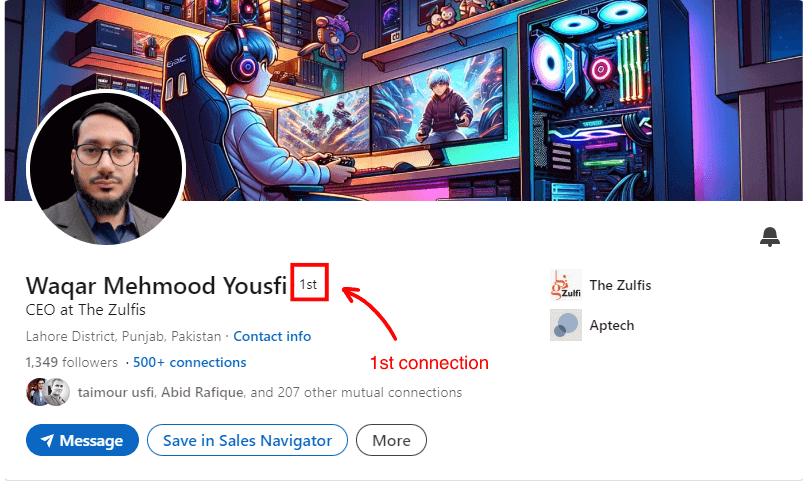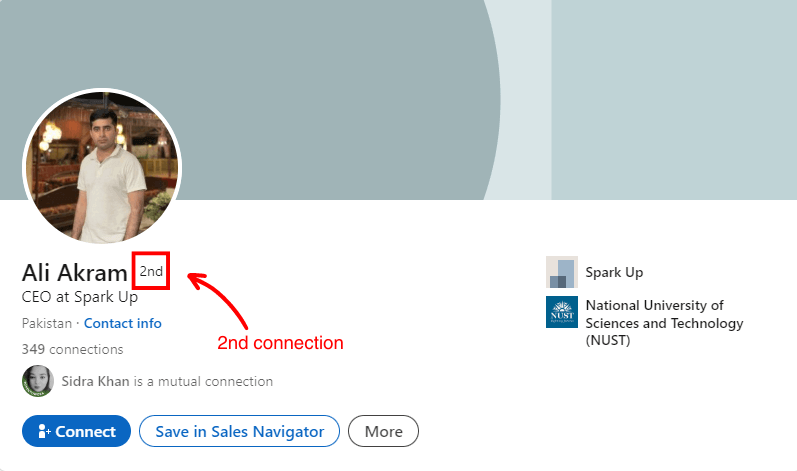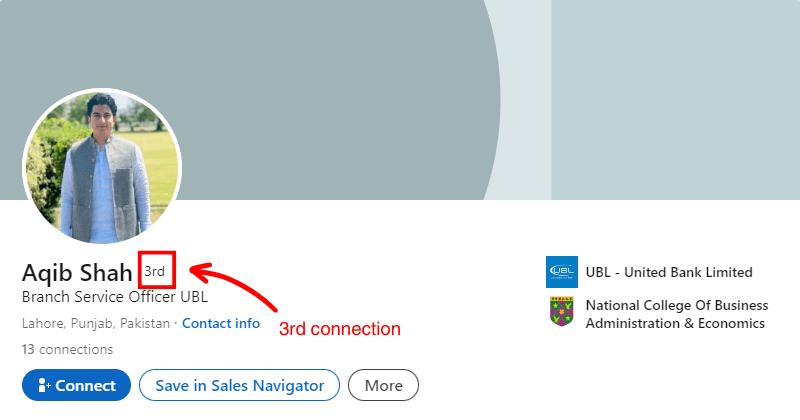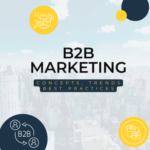LinkedIn stands apart from other social media platforms in that it focuses on professional networking rather than just social interactions. At The Zulfis, we understand the importance of leveraging LinkedIn effectively for your professional growth. Understanding what the 1st, 2nd, and 3rd-degree "connections" represent on LinkedIn is crucial to leveraging the platform effectively. Furthermore, this guide will help you understand these terms and how to use them to your advantage in networking and prospecting.
"The connections you make on LinkedIn can be the bridge to your next big opportunity."
What Do 1st, 2nd, and 3rd Mean on LinkedIn?
1st-Degree Connections
1st-degree connections on LinkedIn are individuals you have directly connected with, either by accepting their invitation or having your invitation accepted by them. Furthermore, these are your strongest connections within the network, providing direct access to contact details. Approximately 30% of these connections share their email addresses, and about 5% share their phone numbers. Consequently, having a direct line to these contacts can significantly benefit prospecting and direct communications.
Explore our services to see how we can help your business grow!

2nd-Degree Connections
2nd-degree connections are those connected to your 1st-degree contacts but not directly connected to you. Also, you can view their profiles and see your connection through mutual contacts. To interact directly, you would typically need to send a connection request first or use LinkedIn’s InMail service if you have a premium account. In addition, this layer expands your network reach by connecting you through mutual acquaintances.

3rd-Degree Connections
3rd-degree connections are one step further removed than 2nd-degree connections, as they are connected to your 2nd-degree contacts. Moreover, you might see a 3rd-degree icon next to their name, indicating this status. Connecting with these individuals often requires more steps, such as sending a connection request by navigating through your mutual connections' network.

LinkedIn Prospecting: How To Connect With Anyone?
Effective LinkedIn prospecting requires a strategy that respects the platform’s etiquette while making meaningful connections. Also, It's important to personalize your connection requests with relevant, concise messages that focus on the recipient, not yourself. Mention how you came across their profile and a specific interest or connection you share. Furthermore, avoid hard selling in your initial contact to build rapport first.

Elevate your Business with The Zulfis®! With over ten years of expertise in lead generation and list building, we are committed to delivering unparalleled value. Experience the quality of our services with a complimentary sample—no contract required.
Partner with us to achieve remarkable growth for your business today.
Navigating LinkedIn Connection Limits
LinkedIn limits the number of connection requests one can send to prevent spamming. Currently, this limit is set at about 100-200 per week. To navigate this limit effectively, engage more with LinkedIn Groups or utilize the 'Open Profile' feature available to premium users. Also, this feature allows you to send messages without a direct connection.
Using LinkedIn Groups and Events for Networking
Participating in LinkedIn Groups and attending LinkedIn Events are excellent ways to meet new professionals. These forums provide a shared space to start conversations and connect without formal introductions. Also, you can send messages to group members and event attendees are more likely to be welcomed and can circumvent some of the platform's restrictions on direct messaging.
Conclusion
Understanding the nuances of LinkedIn’s connection degrees can significantly enhance your networking strategy. By knowing the limits and best practices of connecting with first-, second-, and third-degree contacts, you can expand your professional network more effectively. Utilize this knowledge to approach LinkedIn connections with a tailored strategy that maximizes your professional outreach and prospects.
If you have any questions or need personalized assistance, please contact us.



